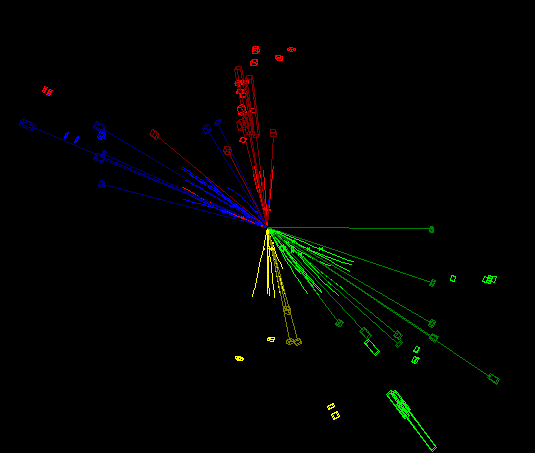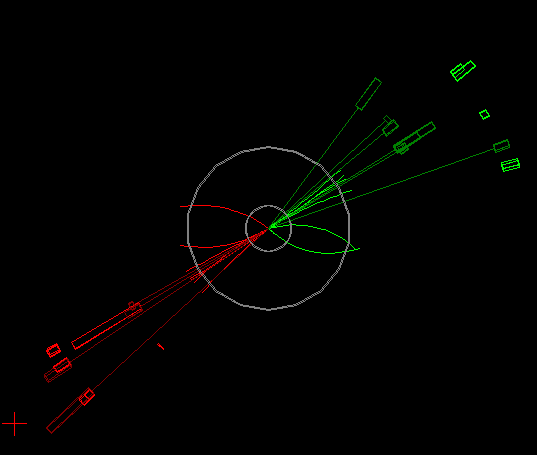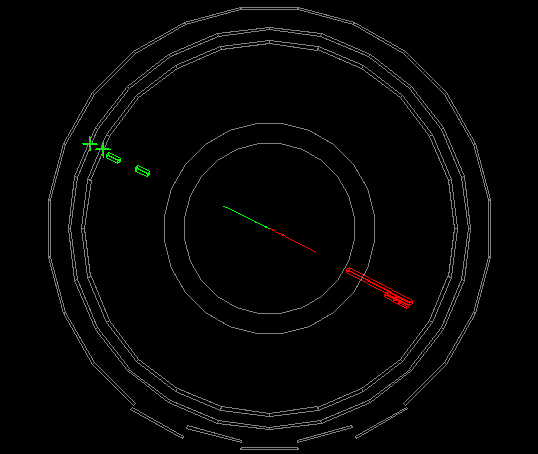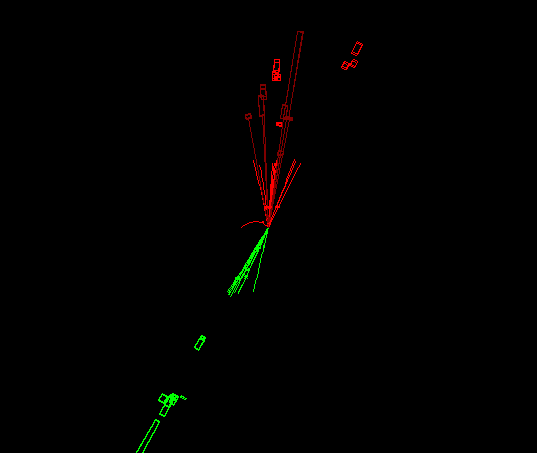 |
An electron (e-) and a positron
(e+) collide to produce two W particles, which decay into
quarks. The quarks give rise to sprays of particles (jets), which are
clearly visible in different colours. The process may be written
as:
e+ + e- ->
W+ + W- ->
q +
q +
q +
q |
|
An electron (e-) and a positron
(e+) collide to produce the Z0, which rapidly
decays into quarks. The jets from the two quarks are clearly visible.
The process may be written as:
e+ + e- ->
Z0 ->
q +
q |
 |
|
 |
An electron (e-) and a positron
(e+) collide to produce the Z0, which rapidly
decays into taus, which, in their turn, decay into a muon and an electron
(with neutrinos). The muon is clearly
indicated in green in the muon detector furthest away from the
collision point. The electron in red is
detected in the electromagnetic calorimeter.
The process may be written as:
e+ + e- ->
Z0 ->
tau+ +
tau- ->
muon+ +
e- +
2vtau + vmuon + ve |
|
What has happened here? Sometimes the event does not
look as expected. Could it be due to the production of the
hypothetical Higgs particle or is it just a very rare type of a
well-known process?
Scientists are presently trying to understand what this
event that occurred in 1997 is due to.
What makes it special is that there is energy missing and that the
jets are scewed.
 |
|




